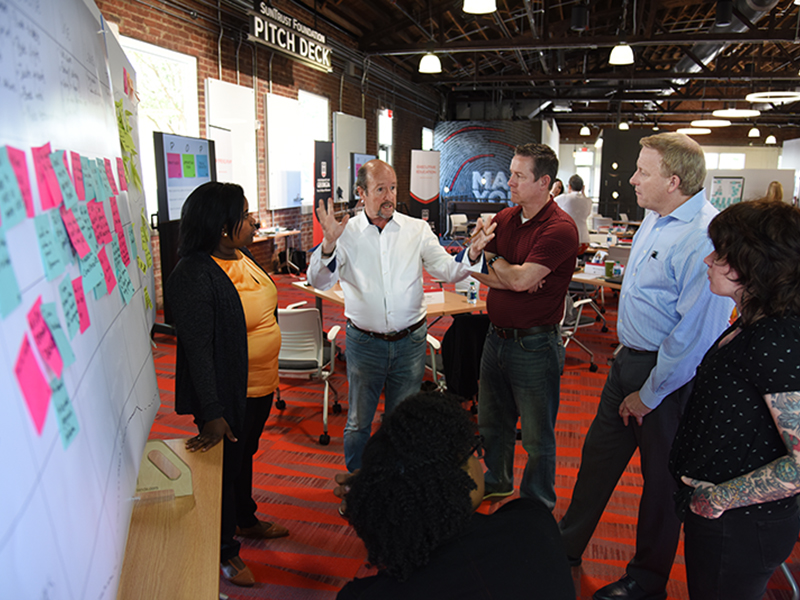There’s a secret to the way companies like Apple and Procter & Gamble stay innovative. It’s an emotional approach to problem solving called human-centered design thinking, and it’s gaining popularity in all organizational functions.
Human-centered design thinking offers businesses a way to better understand customers in order to find new ways to meet their wants and needs. It’s rooted in empathy brought on through immersion and understanding.
“Essentially, it’s emotionally connecting with customers,” said senior lecturer David Sutherland, who teaches the course. “By applying and using human-centered design thinking tools and methods, you will uncover things even the customer didn’t know they needed or desired.”
Interested professionals can learn about human-centered design thinking and its methodologies through an executive education course offered by the Terry College of Business. The course is done in partnership with The Design Academy of San Diego. The Design Academy confers “HCDT Ambassador” digital badging to all who successfully complete the course.
HCDT offers a different approach to problem solving than data-heavy analyses. Instead of relying on numbers, it relies on a qualitative approach to data gathering that requires community engagement.
“By engaging in real-world challenges and interacting with real people, we develop empathy, and through empathy comes insight,” Sutherland said. “When you use quantitative data to drive you to a decision, it’s reductionist. Design thinking is expansionist; it asks you to go broad and to not be comfortable with a solution too quickly. I used to go into meetings where someone would present a problem, then we’d brainstorm, pick one idea and start to develop that idea. Design thinking asks us to step back, broadening our context, get input from the people engaged and involved with the problem, then come back together to share our insights and figure out where we see improvements or opportunities.”
In the two-day course, participants learn the fundamentals of HCDT and its core methodologies. Then, they apply their skills to real-world challenges. Recently, one class took on the challenge of improving the experience of the Athens music scene.
“We had different musicians and music experts come into the program to give a short overview to who they are and what they do. The group had access to them to ask questions and interact with them. Then, we suggested that our participants go and get engaged in the music scene, so they went out to the venues, hung out and learned about it,” Sutherland said. “We taught them how to interview for empathy, and they used those skills when they engaged with the musicians, producers, concertgoers, everybody who was out. Our students came tumbling in the next morning, filled with insight.”
The participants used those unique insights to come up with concepts to improve the Athens music experience. They then gave those insights to the Athens Convention & Visitors Bureau, which has worked to implement many of the suggestions, Sutherland said.
Learning to find insight was invaluable, said Michael McCathren, a course participant and lead for enterprise innovation at Chick-fil-A.
“The HCDT program provided a greater value than other similar workshops I have attended in two ways,” McCathren noted. “First, the case study is a real-life immersive exercise that provides teams the opportunity to be face-to-face with the audience for whom they are designing in their own environments, as well as the customer who will evaluate and potentially implement the team’s concepts.
“Second, the program is designed in such a way that participants can apply what they learn to their own corporate projects as they go, while the learning is fresh,” he added.
The next course in Human-Centered Design Thinking Essentials is scheduled for May 6-7, 2020, at Terry’s Executive Education Center in Buckhead.

